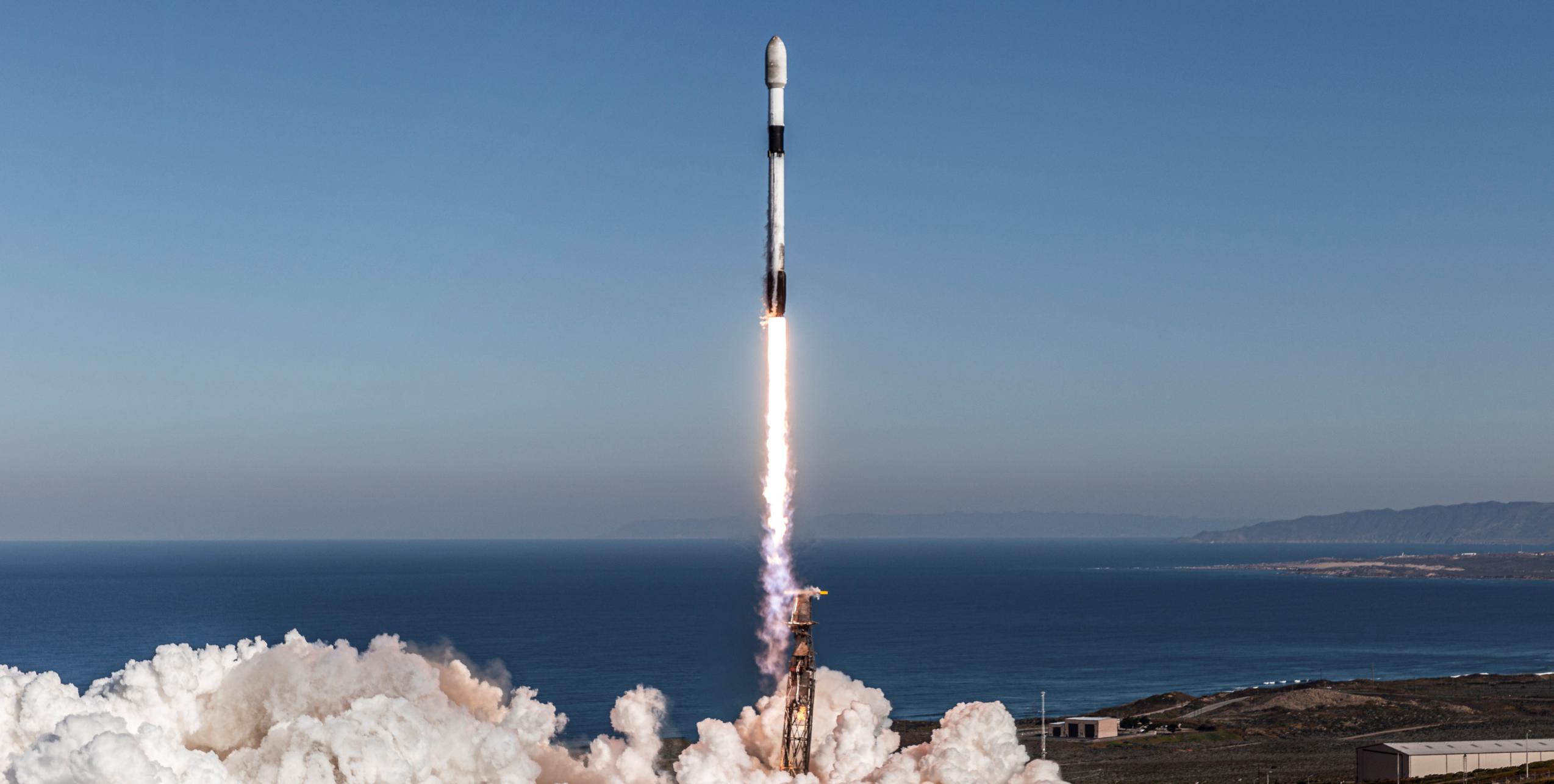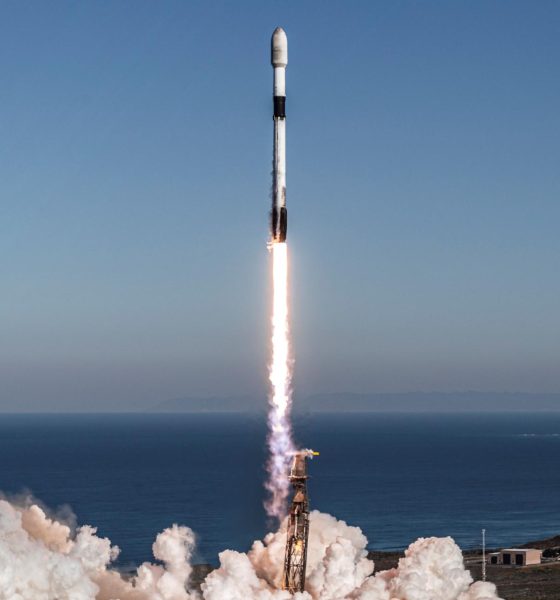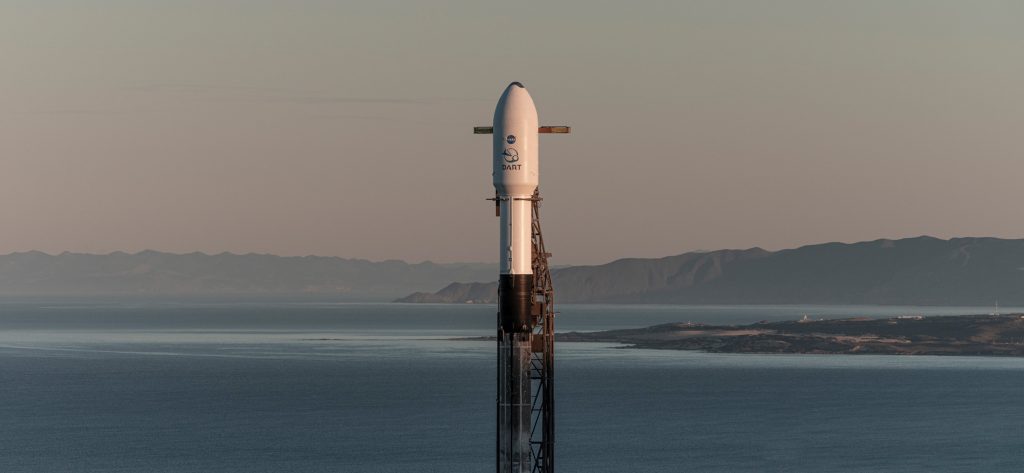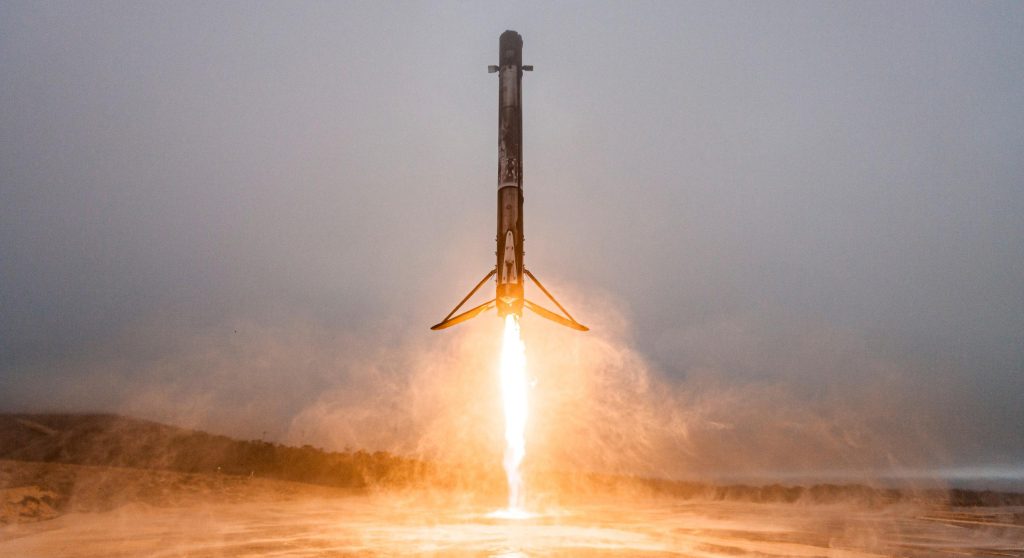

News
SpaceX Starlink launch to smash California pad turnaround record
Update: SpaceX’s Thursday Starlink 3-2 launch was automatically aborted less than a minute before liftoff by Falcon 9’s onboard computers. The company will try again tomorrow, Friday, July 22nd, at 10:39 pm PDT (17:39 UTC).
SpaceX says it’s on track to launch another batch of polar Starlink satellites from the West Coast as early as 10:39 am PDT (17:39 UTC), Thursday, July 21st.
On top of featuring one of the fastest Falcon 9 booster turnarounds ever, SpaceX’s Starlink 3-2 launch will more than halve the fastest turnaround of its Vandenberg Space Force Base (VSFB) SLC-4E pad, potentially rendering it capable of launching dozens of times per year.
Barring delays, Starlink 3-2 is scheduled to launch from SLC-4E just 10 days and 14 hours after the same pad supported Starlink 3-1. The current record – 22 days and 11 hours – was set between the launches of Germany’s SARah-1 radar satellite and Starlink 3-1, meaning that SLC-4E is on track to break its turnaround record twice in a row.
For most of the time since SpaceX began using SLC-4E for Falcon 9 launches in 2013, the pad has rarely supported more than one launch every few months. Between 2013 and 2020, the pad supported a total of 16 successful Falcon 9 launches. 15 occurred between January 2016 and November 2020, averaging one launch every four months and never flying twice in less than 36 days. Between January 2019 and September 2021, the pad only supported three launches and even went 17 months without a single use.

In late 2021, something changed. On top of the introduction of dedicated West Coast Starlink launches, apparent upgrades to the pad’s turnaround capabilities have allowed it to support more launches than usual. In the ten months since SLC-4E exited its hibernation period, it’s supported nine Falcon 9 launches – five for Starlink and four for customers. Prior to 2021, SLC-4E never supported more than six launches in a ten-month period, meaning that the pad is already operating at a 50% higher capacity.
SpaceX, however, apparently wasn’t satisfied and is on track to substantially expand SLC-4’s operational constraints yet again, more than halving its minimum demonstrated turnaround time. By definition, that also doubles the pad’s operational ceiling, meaning that it could theoretically support about 34 launches per year with no downtime. SpaceX appears to have achieved that expansion by applying the same upgrades it already made to its two East Coast launch pads, LC-39A and LC-40, which both set respective turnaround records of approximately nine days and eight days earlier this year. SLC-4E will comfortably bookend the two with its imminent 10.7-day turnaround.
Of course, no launch pad routinely operates at its demonstrated minimum, but a leap forward like SLC-4E’s (22.5 to 10.7 days) all but guarantees that the pad will be able to launch far more frequently as long as rockets and payloads are available. Over the last seven months, LC-39A has averaged one launch every 19 days – more than twice its 9.1-day turnaround record. LC-40, which generally deals with simpler missions and only one of three Falcon rocket variants, has managed one launch every 13 days over the same period – closer to its 8.2-day record but still a ways off.

Even if SLC-4E’s average cadence settles somewhere between SpaceX’s other two pads going forward, it will still likely double its contribution the company’s annual launch cadence and help expedite the deployment of its Starlink internet constellation. If all three pads manage an average of about one launch every two weeks, a target that’s well within reach, SpaceX will have the capacity to launch 72 Falcon rockets per year – more than any other family of rockets in history.
Pad aside, Starlink 3-2 will be Falcon 9 booster B1071’s fourth launch overall and second launch in 33 days – SoaceX’s fifth fastest Falcon booster reuse since the practice began in March 2017. Tune in below around 10:30 am PDT (17:30 UTC) to watch Falcon 9’s 32nd launch of 2022.

Elon Musk
Elon Musk’s Biggest Revelations on AI, Robots, and the Future of Work from the Moonshots Podcast

Elon Musk’s appearance on the Moonshots with Peter Diamandis podcast was packed with bold predictions, candid admissions, and surprising tech insights. The nearly three-hour conversation covered everything from artificial intelligence to humanoid robots, geopolitics, and the future of work. Here are the top 10 most intriguing takeaways:
-
Aggressive AGI Timeline Predictions
Musk offered a detailed view on when artificial general intelligence (AGI) could emerge, suggesting it may arrive sooner than many expect, emphasizing both transformative potential and risks.
-
U.S. vs. China in the AI Race
He discussed the strategic competition between the United States and China over AI development, noting that geopolitical dynamics will shape how and who leads in the next decades.
-
Future of Job Markets
Musk touched on how AI and automation could reshape employment, predicting massive boosts in productivity alongside potential disruptions in traditional work structures.
-
Clean Energy Transition
A recurring theme was the role of clean energy in future economies, with Musk reiterating the importance of scaling sustainable power generation and storage.
-
Humanoid Robots Are Coming
On the podcast, Musk elaborated on Tesla’s work on humanoid robots, hinting at timelines and applications that go beyond factories to general-purpose assistance.
-
Tesla Roadster “Last Human-Driven Car”
Outside the core discussion topics, Musk teased features of the upcoming Tesla Roadster — calling it “the best of the last of the human-driven cars” and suggesting safety won’t be its main selling point.
-
The Role of AI in Clean Energy and Robotics
Linking AI to both energy optimization and robotics, Musk explained how smarter systems could accelerate decarbonization and task automation across industries.
-
U.S. Innovation Leadership
Musk argued that maintaining American leadership in key tech sectors like AI, space, and robotics should be a national priority, with thoughtful policy and investment.
-
Job Creation vs. Job Elimination
While acknowledging automation’s disruptive effects, he also outlined scenarios where new industries and opportunities could emerge, particularly in AI, space, and advanced manufacturing.
-
Long-Term Vision for Humanity
Throughout the conversation, Musk revisited his long-term philosophical views — including a belief in humanity’s responsibility to become a multi-planetary and technologically empowered species.
Whether you agree with Musk’s optimism or not, the podcast offers a window into the thinking of one of the most influential figures in tech today, in and why his visions continue to spark debate and inspiration.
Elon Musk
Elon Musk just said some crazy stuff about the Tesla Roadster

Elon Musk appeared on the Moonshots podcast with Peter Diamandis today to discuss AGI, U.S. vs. China, Tesla, and some other interesting topics, but there was some discussion about the upcoming unveiling of the Roadster, the company’s electric supercar that will arrive several years after it was initially slated for release.
Musk made some pretty amazing claims about the Roadster; we already know it is supposed to be lightning-fast and could even hover, if Tesla gets everything to happen the way it wants to. However, the car has some pretty crazy capabilities, some of which have not even been revealed.
On the podcast, Musk said:
“This is not a…safety is not the main goal. If you buy a Ferrari, safety is not the number one goal. I say, if safety is your number one goal, do not buy the Roadster…We’ll aspire not to kill anyone in this car. It’ll be the best of the last of the human-driven cars. The best of the last.”
🚨 Elon on the Roadster unveiling, scheduled for April 1:
— TESLARATI (@Teslarati) January 6, 2026
Musk makes a good point: people who buy expensive sports cars with ridiculous top speeds and acceleration rates do not buy them to be safe. They hope they are safe in case of an emergency or crash, but safety is not at the forefront of their thoughts, because nobody buys a car thinking they’ll crash it.
The Roadster is truly going to push the limits and capabilities of passenger vehicles; there’s no doubt about that. Tesla plans to show off the new version car for the first time on April 1, and Musk has only hinted at what is possible with it.
Musk said back in November:
“Whether it’s good or bad, it will be unforgettable. My friend Peter Thiel once reflected that the future was supposed to have flying cars, but we don’t have flying cars. I think if Peter wants a flying car, he should be able to buy one…I think it has a shot at being the most memorable product unveiling ever. [It will be unveiled] hopefully before the end of the year. You know, we need to make sure that it works. This is some crazy technology in this car. Let’s just put it this way: if you took all the James Bond cars and combined them, it’s crazier than that.”
Production is set to begin between 12 and 18 months after the unveiling, which would put the car out sometime in 2027. Hopefully, Tesla is able to stay on track with the scheduling of the Roadster; many people have been waiting a long time for it.
News
Tesla launches hiring for Robotaxi program in its twentieth country
Overall, the hiring signals Tesla’s aggressive timeline for global dominance in autonomous mobility.

Tesla has launched a hiring initiative for its Robotaxi program in its twentieth country, as the company posted two new jobs in Thailand this week.
Tesla is hiring in Bangkok and Kowloon for the Vehicle Operator position, which is related to data collection, and is the first in Thailand, but the twentieth country overall, as the company tries to expand into other markets.
🚨 BREAKING: Tesla is hiring additional full-time Vehicle Operators in Bangkok, Thailand.
Previous openings were 6-month, part-time roles. These are equivalent to AI Safety Operator roles in the U.S. pic.twitter.com/R6LzoU1bos— Tesla Yoda (@teslayoda) January 5, 2026
Tesla has had active job postings for Vehicle Operator positions in the United States, India, Israel, Taiwan, Germany, the Czech Republic, Hungary, the UK, Finland, Switzerland, Sweden, the Netherlands, Austria, Spain, Norway, Italy, and Turkey in past listings.
These postings are not all currently available, likely because the roles have been filled.
Thailand is the most recent, and broadens the company’s potential path to expanding its ride-hailing program, which is only active in the United States in Austin, Texas, and the California Bay Area, so far.
These roles typically involve data collection, which assists in improving Autopilot and Full Self-Driving operation. Tesla’s self-driving programs utilize real-world data that is accumulated and stored, observing vehicle and traffic behavior, as well as tendencies that are performed by human drivers to help increase safety and overall performance.
Overall, the hiring signals Tesla’s aggressive timeline for global dominance in autonomous mobility. Although the company has several high-profile rivals and competitors in the field, it has established itself as a main player and a leader in the development of autonomous technology, especially in the U.S., as its FSD suite is refined on almost a weekly basis.
The Full Self-Driving suite is available in seven countries and territories currently, including the U.S., Canada, China, Mexico, Puerto Rico, Australia, and New Zealand. Its biggest goal for expansion is currently the European market, where regulatory hurdles have been the main bottleneck prolonging its launch on the continent.
Tesla has performed months of testing in various European countries, including France and Spain, and does have support in some areas from various regulatory agencies. However, the company is hoping to get through this red tape and offer its suite in Europe for the first time, hopefully this year.








